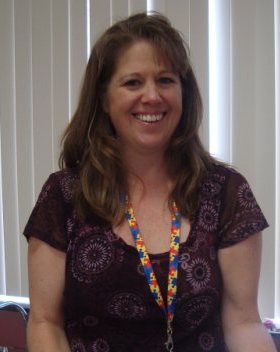So what do we really mean when we talk about global connections. It boils down to this: Our well-being is linked to others. What we do in our own lives affects not only ourselves and the people around us, but has ripple effects that can be felt around the world. For that reason, it is important to teach students early (and often) that the choices we make can have powerful consequences. Therefore, we need to help them understand what are good choices versus bad when it comes to the overall well-being of the Earth and its people. Be sure to read to the end of this post to get your free download to make an impact on your students and thus around the world.
In 2015, several countries, came together to create a set of goals meant to keep the world healthy and strong. They came up with 17 Sustainable Developmental Goals with a timeline of being realized by the year 2030. They are not easy goals. But they are critically important if we want to continue to live on a planet that is strong and inhabited by healthy people. You can read more about their mission HERE, but these are the goals they came up with:
- No poverty
- Zero hunger
- Good health and well-being
- Quality education
- Gender equality
- Clean water and sanitation
- Affordable and clean energy
- Decent work and economic growth
- Industries, Innovation, and Infrastructure
- Reduced Inequalities
- Sustainable cities and communities
- Responsible consumption and production
- Climate action
- Life below water
- Life on land
- Peace, justice, and strong institutions
- Partnerships for goals
Those are a lot of goals, so I decided to just choose 8 of them to focus on while creating a unit for students with significant challenges in middle and high school. But the issue still, was how to get them to really understand what a global impact meant, and how they could create one.
1. I started with a book.
I wrote a 64 page book in which I talked about each of the goals in terms I thought students would understand. Then, I gave them a very specific action they could do locally. And a specific action they could do globally.
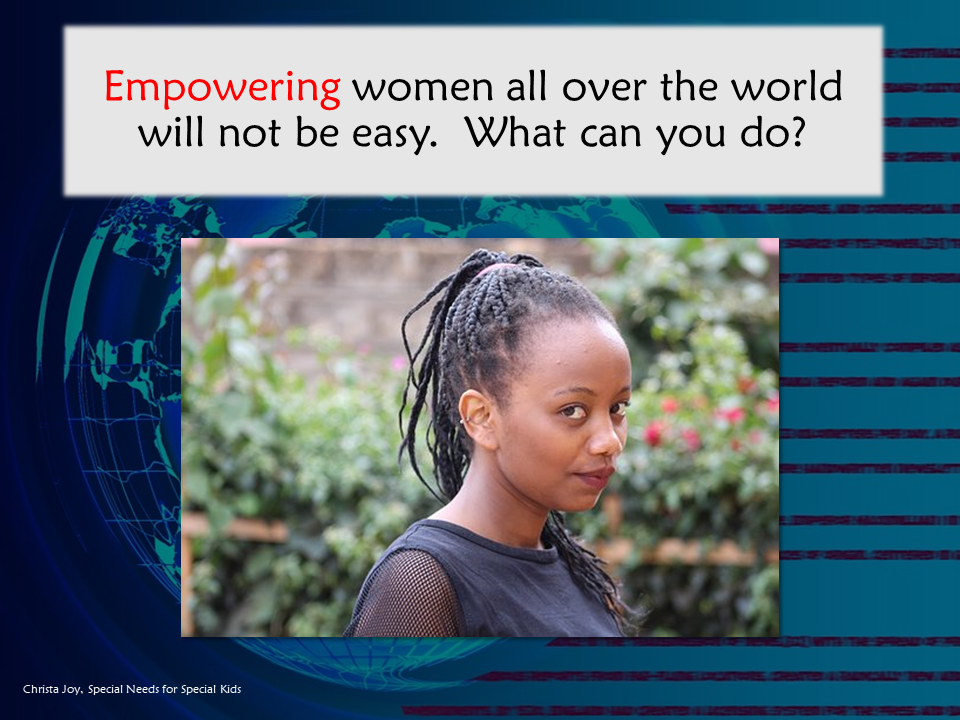
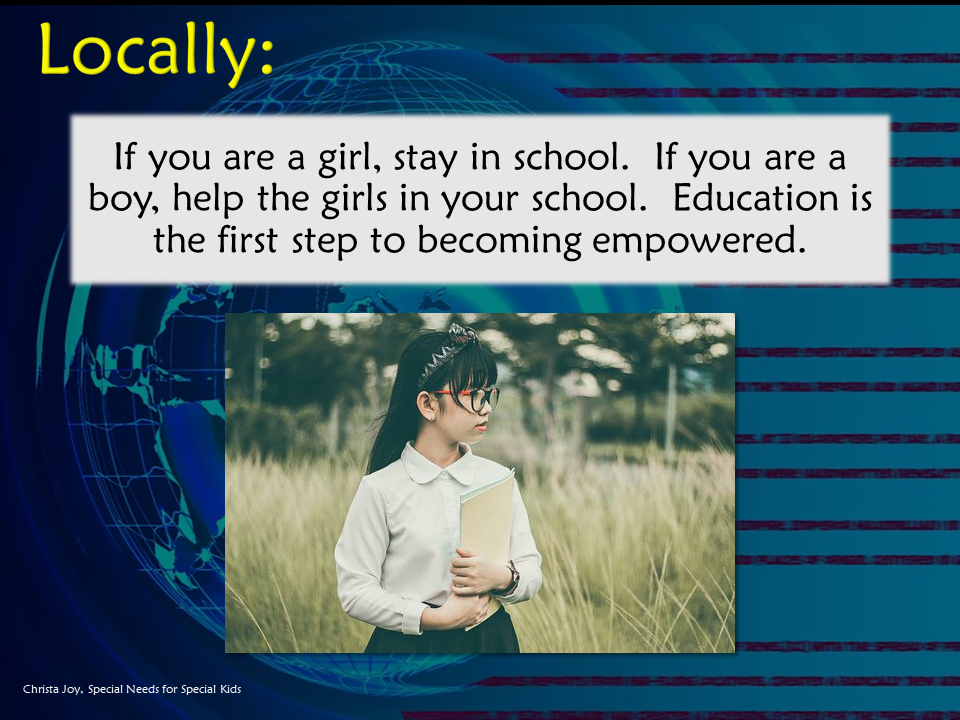
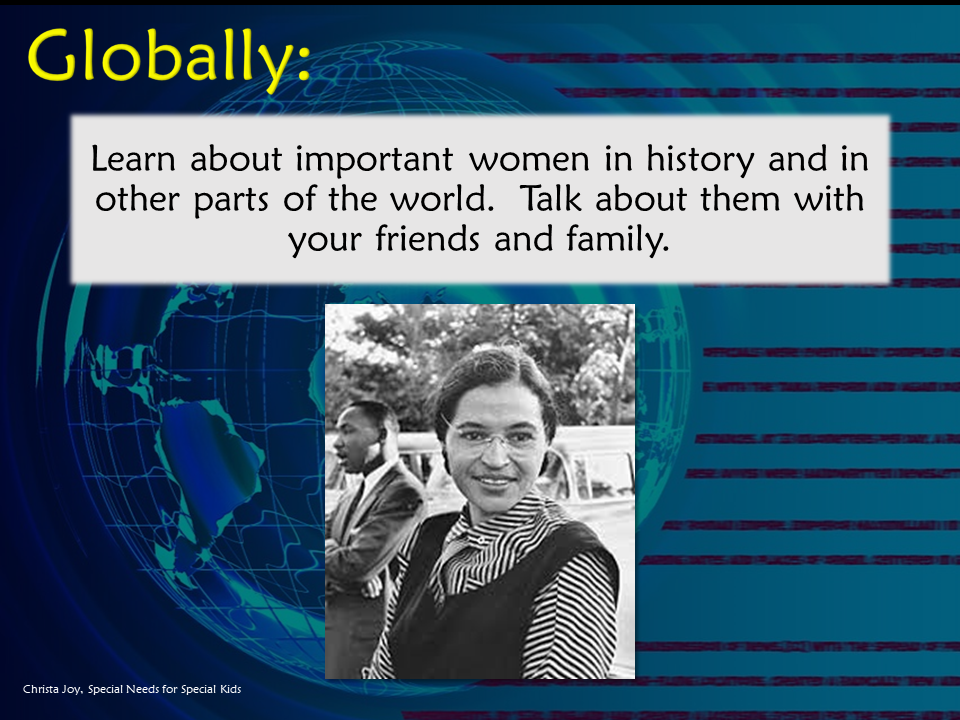
2. I developed a vocabulary list.
I find that key vocabulary is critical for long-term retention and generalization of the material. For this unit, I was came up with 15 words that I wanted to use in various activities through the unit.
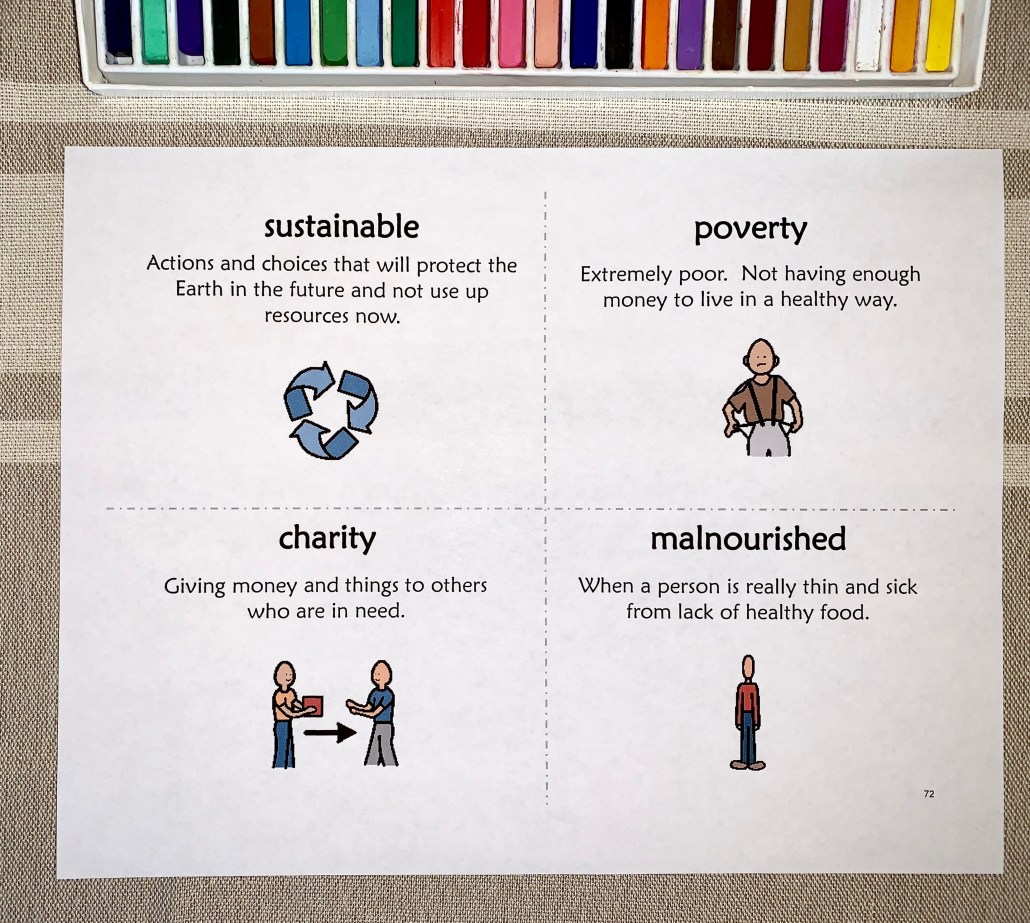
3. I developed some activities.
I love using thinking maps. In particular, I find circle maps to be one of the best tools for teaching our students note taking and seeing the overall picture. I came up with 3 circle maps for this unit. One was a general overview, one was about local impacts, and one covered global impacts.
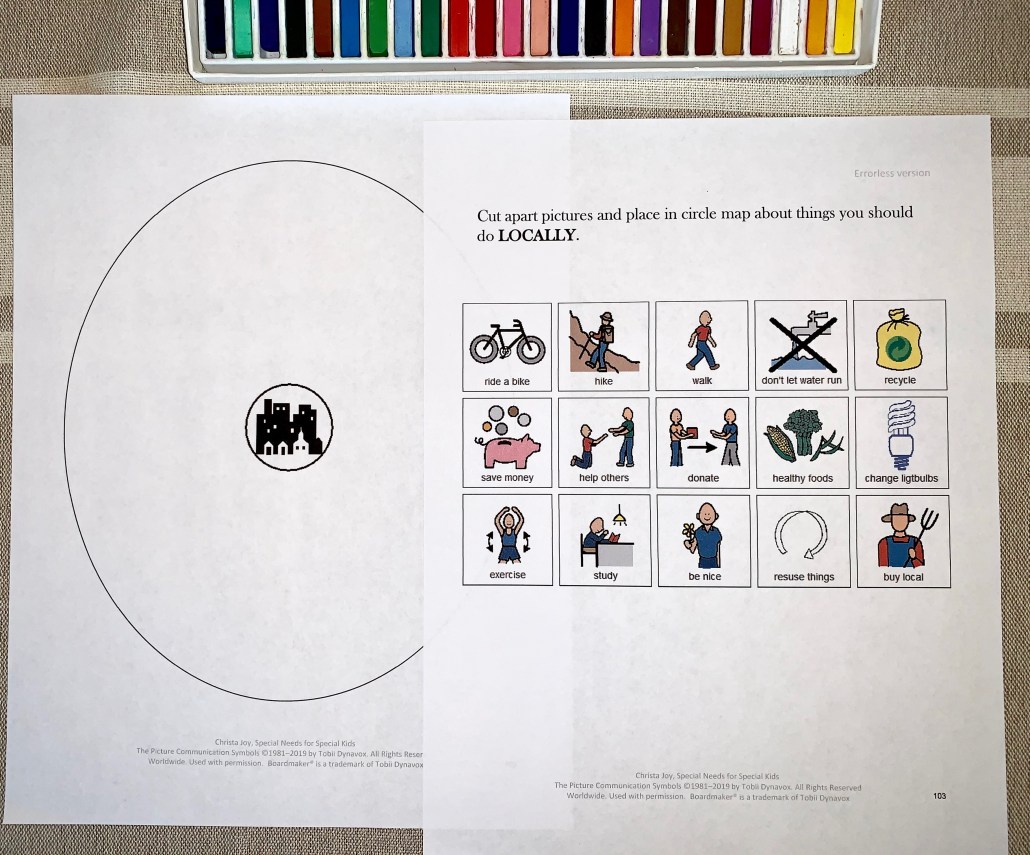
I also created a sorting activity to assess if the students were really getting the concept of what a good action or choice was versus a bad one. Remember, you can always add color coding if needed for more additional support.

I also made an activity that looked at each goal and had students identify a local and global action they could do for each. Because I wanted students to focus more on matching the change to the goal, I used color coding. All the local actions were outlined in green and global actions were outlined in blue.
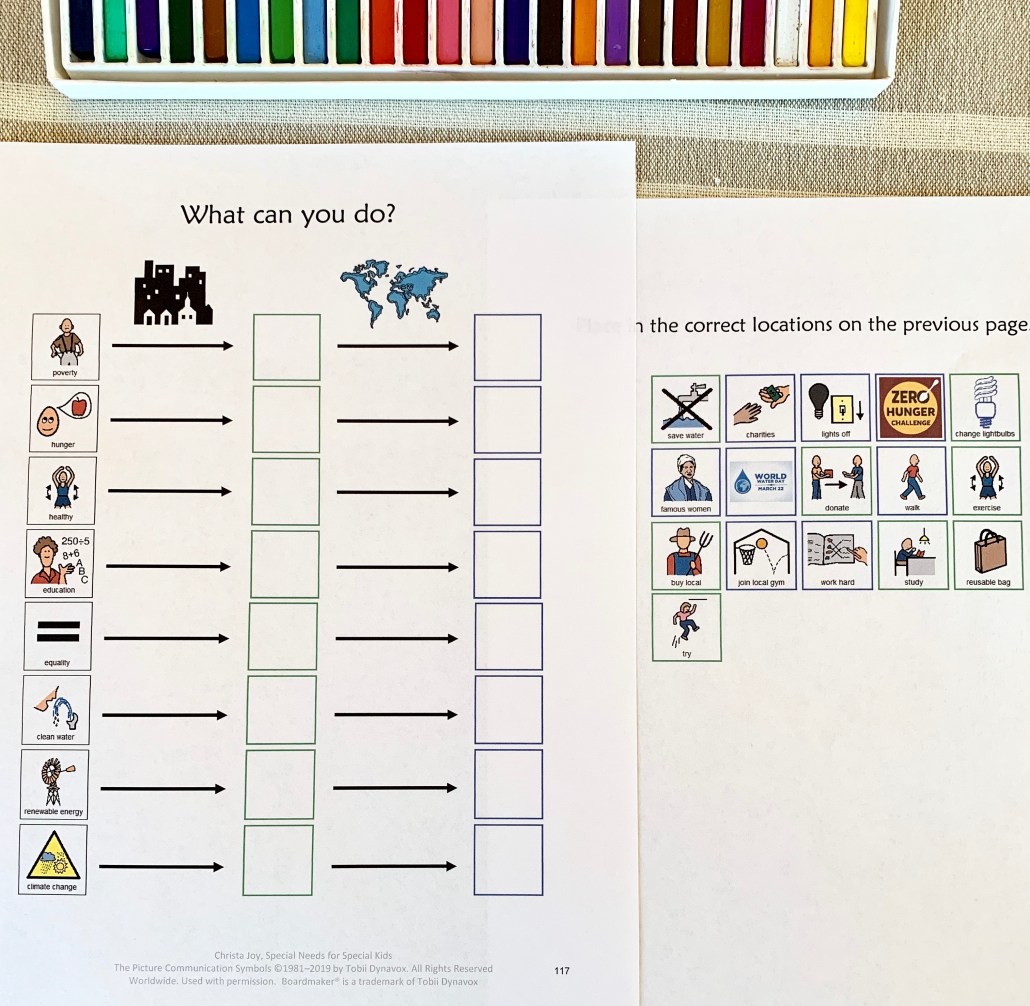
4. I created a writing prompt and pledge cards.
I LOVE writing prompts. They are a great way to allow EVERY student to express their own individual thoughts with some support. I make all my prompts errorless. Obviously there are some better answer choices than others, but all the answers will work. The best part is allowing students to then share their finished stories with others. So awesome!!
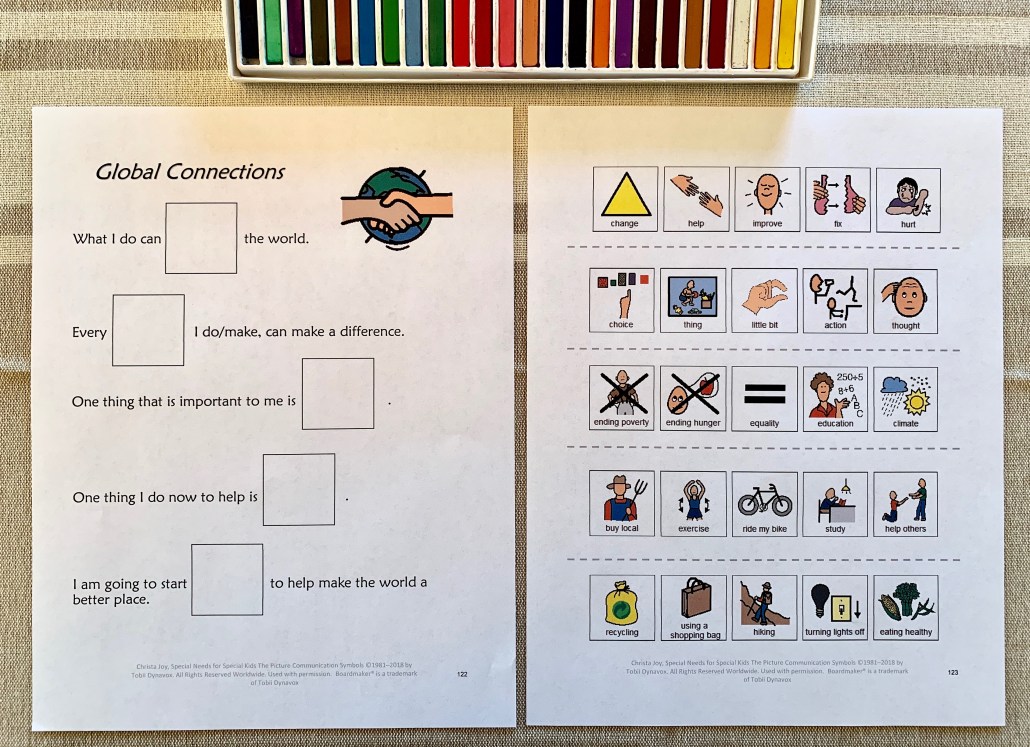
I also decided to created some pledge cards to go with this unit. I made them similar to how I create power cards. This gave students a way to focus in on one particular goal that was meaningful to them.
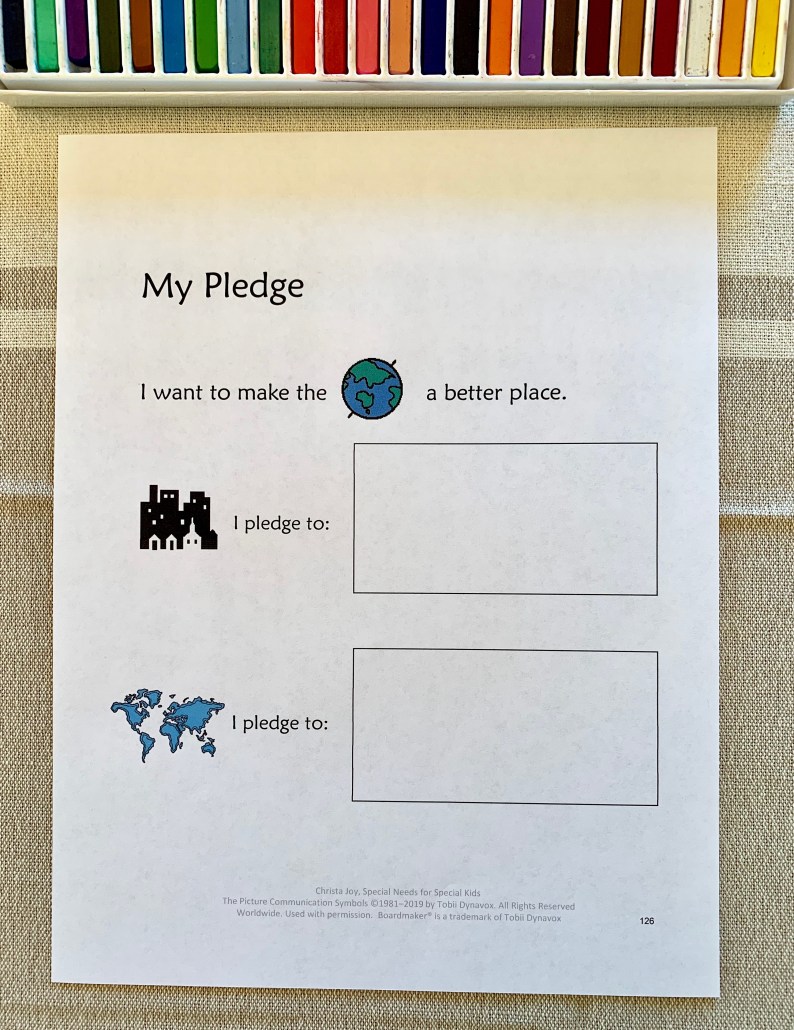
5. I made some assessments.
Of course, you need some way to assess if all the work you are putting into teaching this material is actually making an impact on your students. I like to create some close worksheets that are more narrowly focused. I use these as a warm up to determine what sections many need more re-teaching.

Then I also have a standard assessment. I always make 3 versions of the same assessment. Version one allows students to circle the correct answer choice using pictures. Version two requires a little more prep work. I enlarge the answer choices, print them onto card stock and laminated them. I can then ask the student the question and put the answers (field of 2 or 3) in front of them. The student can indicate their answer using the selection method of their choice, which may be pointing, slapping the card, or even eye gaze. The last version is a standard multiple choice assessment for any kiddos who may be good readers.

So, how long will/should it take you to teach your students about global connections and their own individual impact on the world? I broke it all down for you in a 13 day lesson plan. With some reteaching, and inevitable bumps in the road, I can see this lesson lasting at least 3 weeks. But really, when it comes to impacting the world in a lasting and positive way, that seems like hardly any time at all.
Want to try an activity from this unit? There are so many to choose from, but I am including my favorite here, the writing prompt. It would fit well with whatever lesson plans you may already be using, so be sure to click the button below to grab your free copy.
You can also get my complete unit on Global Connections by clicking HERE or the caption below. It was a labor of love that I hope will make an impact around the world.


